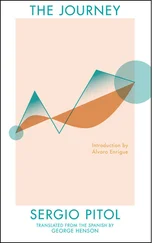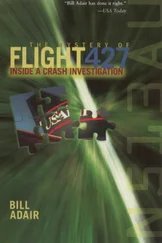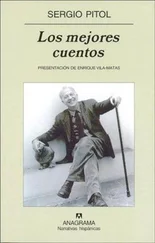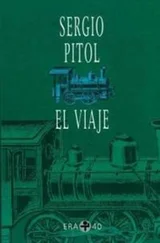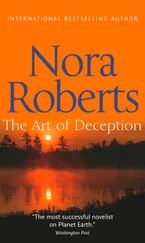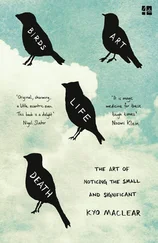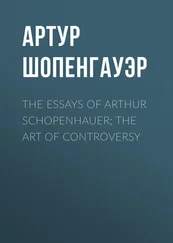Sergio Pitol - The Art of Flight
Здесь есть возможность читать онлайн «Sergio Pitol - The Art of Flight» весь текст электронной книги совершенно бесплатно (целиком полную версию без сокращений). В некоторых случаях можно слушать аудио, скачать через торрент в формате fb2 и присутствует краткое содержание. Год выпуска: 2015, Издательство: Deep Vellum, Жанр: Современная проза, на английском языке. Описание произведения, (предисловие) а так же отзывы посетителей доступны на портале библиотеки ЛибКат.
- Название:The Art of Flight
- Автор:
- Издательство:Deep Vellum
- Жанр:
- Год:2015
- ISBN:нет данных
- Рейтинг книги:5 / 5. Голосов: 1
-
Избранное:Добавить в избранное
- Отзывы:
-
Ваша оценка:
- 100
- 1
- 2
- 3
- 4
- 5
The Art of Flight: краткое содержание, описание и аннотация
Предлагаем к чтению аннотацию, описание, краткое содержание или предисловие (зависит от того, что написал сам автор книги «The Art of Flight»). Если вы не нашли необходимую информацию о книге — напишите в комментариях, мы постараемся отыскать её.
The first work in Pitol's "Trilogy of Memory," The Art of Flight imaginatively blends the genres of fiction and memoir in a Borgesian swirl of contemplation and mystery, expanding our understanding and appreciation of what literature can be and what it can do.
The Art of Flight — читать онлайн бесплатно полную книгу (весь текст) целиком
Ниже представлен текст книги, разбитый по страницам. Система сохранения места последней прочитанной страницы, позволяет с удобством читать онлайн бесплатно книгу «The Art of Flight», без необходимости каждый раз заново искать на чём Вы остановились. Поставьте закладку, и сможете в любой момент перейти на страницу, на которой закончили чтение.
Интервал:
Закладка:
One of the modes of Chekhovian narrative is its fragmentation, sometimes its pulverization. This is not capricious, rather a formal response to one of his fundamental concerns. The world of Chekhov seems to turn on a single axis: lack of communication. The breakdown in communication occurs especially among the most sensitive and generous people, and affects the most delicate relationships: lovers, friends, parents, and children. Little by little, the characters lose their voice, they become frozen by their words, and when they are forced to speak they coagulate language, infect it, so what could be a celebration of reconciliation becomes a duel of enemies or, worse still, a contemptuous indifference.
In 1888, with “The Steppe,” Chekhov initiated a new form of writing whose originality seems to have gone unnoticed, at least at the time. For eight years he had written stories and novels. The world in “The Steppe” is seen through a child’s eyes, but the language is not the language of childhood, rather it struggles to reach other levels. The challenge was more demanding than it seemed at first sight. Chekhov was not content to follow the child’s gaze and translate in perfect language his discoveries, passions, fears; he proposed something more complex: to fuse his own view of the universe with the limited perceptions of a child protagonist. Hence a new poetics was born. The perceptions of the child, Yegorushka, constitute the main body of the story, but the refined descriptions of nature, the digressions and reflections on it could scarcely be attributed to him. The story corresponds to a child’s gaze, but it is written in a style not always accessible to that gaze.
“Chekhov,” says Dmitry Merezhkovsky, “does not contemplate nature only from an aesthetic point of view, even if all of his works contain a multitude of tiny, elegant brushstrokes that document the subtlety of his powers of observation. Like every true poet, he feels a profound affection for nature, an instinctive understanding of his unconscious life. He not only admires it from a distance like a serene and observant artist, but he also absorbs it fully as a man and leaves his indelible mark on all his ideas and feelings.” In “The Steppe” the description of nature and the reflections on it are Chekhov’s; the perception of human events belong to the child protagonist.
It is the retelling of a child’s first steps through the world. As he travels across the steppe he comes to know the unpredictable world of adults and the no less disturbing world of nature. He confronts dangers from which, in the end, he will emerge invictus . His experience possesses all the features of an initiatory rite. For the author, it is a question of a journey as well as a challenge. It is a journey toward a new narrative form. Like the steppe, the story lacks fixed boundaries at the beginning and the end.
There appears in the story a character destined to grow in importance in the Chekhovian universe. He lacks any appealing quality. Neither Gogol nor Turgenev, Tolstoy nor Dostoevsky could portray him because he did not exist during their lifetime. He is an entrepreneur, the representative of the new capitalism that is beginning to take shape in Russia. That character’s name in “The Steppe” is Varlamov; Varlamov, not unlike the representatives of the new Russian intelligentsia — Stanislavsky, Diaghilev, and Chekhov himself — was probably the son or grandson of serfs. To Chekhov these energetic and active men who were beginning to lead the world were necessary but also deeply odious. Yegorushka hears about Varlamov from every character he encounters along his journey across the steppe. He is in charge. However, when he finally sees him more than halfway through the novel he is surprised by his appearance. He expected to see a kind of tsar but what he finds is an insignificant man in a white cap and plain corduroy suit. He’s the “short, gray, large-booted little man on the ugly nag who was talking to peasants at an hour when all decent people are still abed.” 16Twice he sees him use the whip: once to beat Jewish innkeepers; a second time to whip a character that was unable to give him accurate information. Such is his way of communicating with the world: his language. It does not escape Yegorushka that however insignificant he may look there was a sense of strength and control over his surroundings in everything about him, even in the way he held the whip.
Varlamov’s fists decide the fate of all those who inhabit or travel the steppe. He exists on the same level as, if not above, nature. During a march in a storm at night, Yegorushka, half-asleep, is able to see, through the flashes of lightning, his fellow travelers. The image transmitted to us is like that of Breughel’s blind men. The old men lean on each other, one’s face is deformed due to chronic swelling in his jaw, another drags his swollen feet; another, ahead of them, like a sleepwalker, a former cantor who has lost voice, trudges along. Covered in coarse straw mats, they crawl beside the wagons. These monstrous figures, nature’s castoffs, are the future portrait of what the handsome, strapping young men, newcomers to the trade, walking behind them, will become.
As a rule, the first paragraph of a Chekhov story gives us the essential data and tone of the story. We should not expect major surprises in the story, rather a mere germination of a seed that is already found in the overture. On the first page of “The Name-Day Party,” we learn that Olga Mikhailovna is pregnant, that she lives in a provincial mansion surrounded by vast gardens where, on that day, her husband’s Saint’s Day is being celebrated, and that the celebration has fatigued and irritated her. Everything suggests that the story will be told from her point of view. We also learn that she does not live in harmony with the world around her. She has just been served an eight-course meal, and the endless clamor that accompanied it has exhausted her to the point of fainting. We have the feeling that the society around her irritates her more than what could be considered natural. There appears in her reflections a tension that foreshadows hysteria and foretells a dramatic denouement. That tension is expressed within the dichotomy that always interested Chekhov: the confrontation between society and nature; the former represented by the behavior of the party guests, the latter by the son the woman carries in her womb. Olga Mikhailovna flees the party in the first paragraph to hide momentarily in a garden path where amid the smell of freshly cut hay and honey and the buzzing of bees she surrenders herself to the emotions of the tiny being she carries inside her womb so that they may take complete control over her. But this raptio in the middle of nature lasts only momentarily. Society prevails, and that place in her thoughts that was to be occupied by the child is invaded by a feeling of guilt for having abandoned her guests and by a marital quarrel, which is inevitable in all of Chekhov’s stories. Her husband has just railed against some recent reforms: trial by jury, freedom of the press, and the education of women — three victories won by liberal society over the autocracy. She disagrees with her husband’s position just to annoy him. And this fact brings us closer to the real source of her problems. The dilemma between nature and society finds a viable channel to express itself: the naked opposition between man and woman. Overcome by jealousy, the protagonist only notices her husband’s defects and surely magnifies them. Piotr Dmitrich’s affectation awakens a morbid hatred in her. But, is she as real a character as she seems? Does she truly live the enlightened ideas that she proclaims? Or does she merely take advantage of some abstract concepts, at moments such as this, in order to feel superior to her husband? Possibly. The fact is that we see something cold and possessive in her agitation, a blind desire to take control of men that renders her odious to us. Both are fed up with the party that began in the morning and will last until midnight. The drama unfolds throughout the seemingly never-ending hours that transpire during the festivities. The inability to speak, to communicate, begins to take control of her, until she can no longer withstand the pressure inside, and it spills out in a fit of near-madness. Resentment, spite, and rage triumph. The ending is tragic. Society prevails in the worst possible way over nature, the biological instinct. The couple, who during the party have played a complicated game of masquerade, end up destroying the unborn life. The original, the important, the essentially Chekhovian, is constituted by the construction of the story through a storm of details, almost all apparently trivial. A single act, two or three words spoken in passing, is enough to recreate an atmosphere and suggest a past. The trivial suddenly becomes important, significant.
Читать дальшеИнтервал:
Закладка:
Похожие книги на «The Art of Flight»
Представляем Вашему вниманию похожие книги на «The Art of Flight» списком для выбора. Мы отобрали схожую по названию и смыслу литературу в надежде предоставить читателям больше вариантов отыскать новые, интересные, ещё непрочитанные произведения.
Обсуждение, отзывы о книге «The Art of Flight» и просто собственные мнения читателей. Оставьте ваши комментарии, напишите, что Вы думаете о произведении, его смысле или главных героях. Укажите что конкретно понравилось, а что нет, и почему Вы так считаете.

